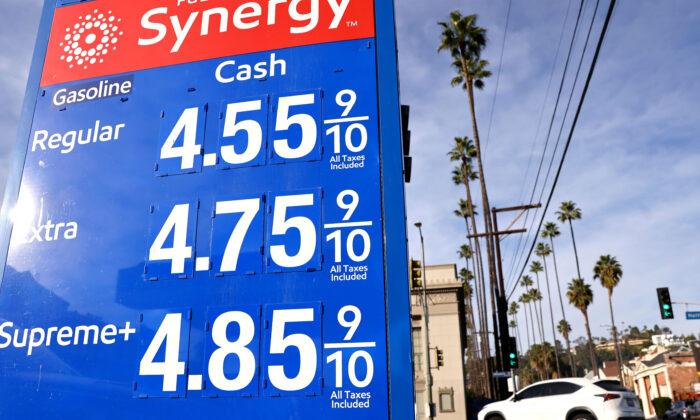A fuel forecast from GasBuddy predicts gasoline prices will reverse their downward drift and rise next year, potentially jumping as high as $4.13 per gallon in June, although a likely bump in crude supply is expected to push prices lower by the end of 2022.
“While Americans are likely to see higher prices in 2022, it’s a sign that the economy continues to recover from COVID-19,” GasBuddy head petroleum analyst Patrick De Haan wrote in the forecast.
National gas price averages will peak in spring, ranging from $3.52 to $4.06 per gallon in May and from $3.43 to $4.13 per gallon in June, according to the forecast.
“No one would love to see $4 per gallon gasoline, but we’ll only get there on the back of a very strong economy, so it’s not necessarily bad news,” De Haan said, adding that the forecast is subject to higher uncertainty due to the pandemic, ”but all signs point to gas prices remaining elevated next year until the high prices attract additional oil supply, which will help prices cool off as we end 2022.”
EIA’s price projections are lower than GasBuddy’s prediction of a monthly average of $3.27 per gallon in January and $3.41 per gallon for the whole year.
“Cash prices for gasoline up 4cts (East of Rockies) to as much as 16cts gal (PNW). Downtrend in retail pump prices probably over for now,” Kloza wrote.
“Typically, falling demand and increased supply would support larger drops in pump prices, but fluctuations in the price of crude oil have helped to keep pump prices elevated. If crude prices continue to climb, pump prices will likely follow suit,” the association stated.
High gas prices have played a major role in pushing up the rate of inflation, which hit a multi-decade high of 6.8 percent in the 12 months through November. They’ve also posed a political problem for the Biden administration, which has sought to cool pump prices by first pleading with OPEC to boost production and later releasing crude from the U.S. national strategic stockpile.
Republicans have criticized President Joe Biden for relying on OPEC to ramp up supply to counter higher prices at the pump, rather than boosting domestic oil production.





